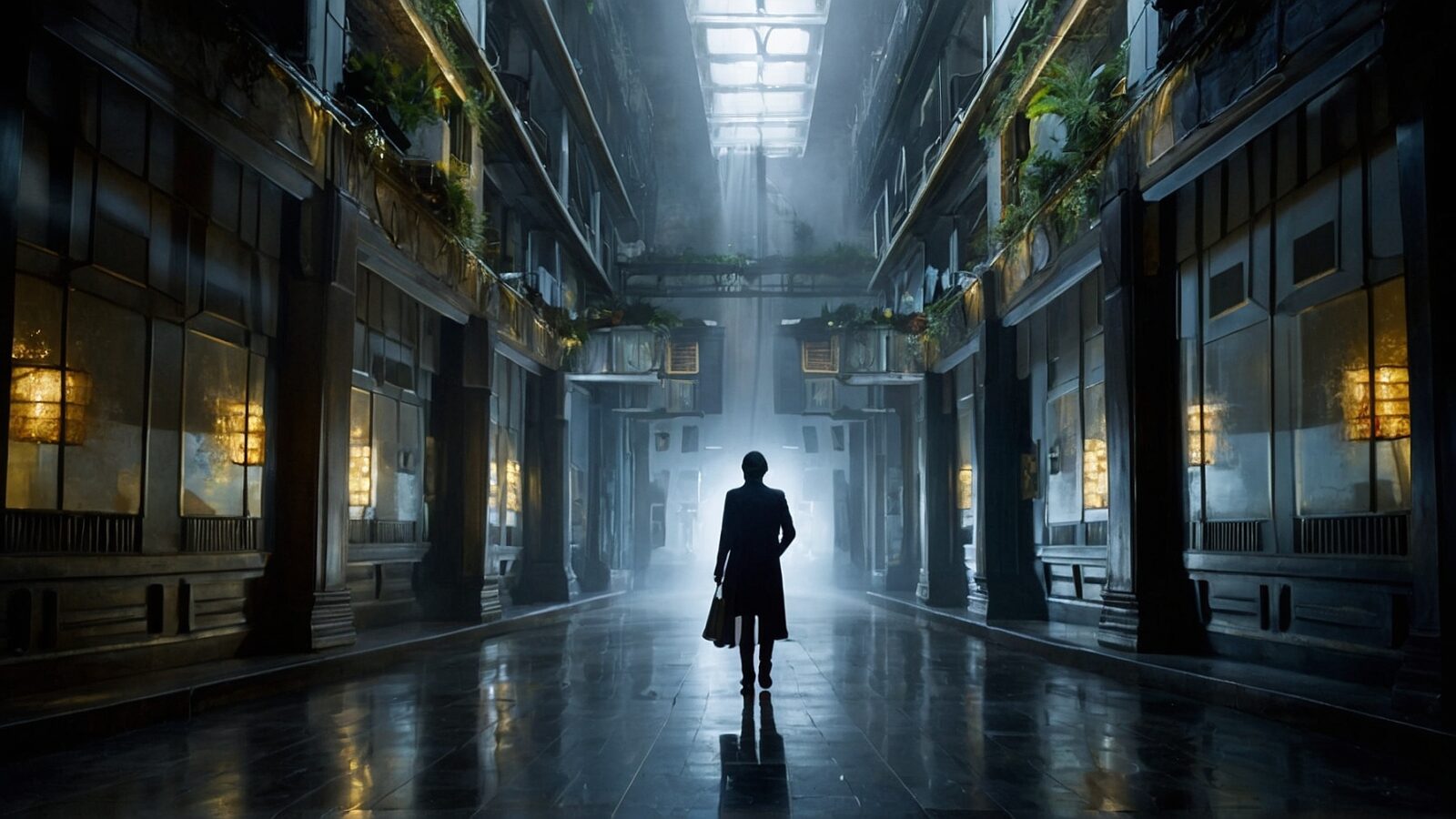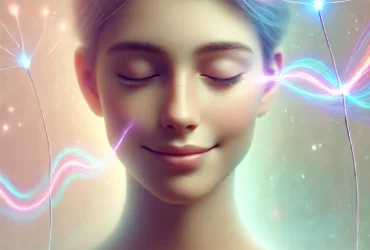
Have you ever walked outside on a sunny day and felt like you had to squint or shield your eyes?
That’s called sensitivity to light, and it’s more common than you might think. This article will explore the causes, symptoms, and various treatments for those who find themselves struggling with bright lights.
Keep reading—it’s enlightening!
Key Takeaways
- Sensitivity to light, or photophobia, causes discomfort and pain in bright conditions with symptoms like squinting, needing sunglasses indoors, and experiencing headaches when exposed to light.
- Light sensitivity has many causes ranging from eye problems such as dry eye and cataract surgeries to central nervous system issues including migraines and brain injuries.
- Wearing protective gear like UV – blocking sunglasses, using dimmer switches for lighting control, applying artificial tears for dry eyes, and regular eye exams are effective treatments and preventive measures against photophobia.
Identifying the Symptoms of Photophobia

Photophobia makes eyes overly sensitive to light, leading to discomfort or pain. It’s a common symptom that signals the eye’s struggle with bright conditions. Here are several signs that indicate someone might have photophobia:
- Excessive squinting or blinking when exposed to light sources, whether it’s sunlight or indoor lights.
- An urge to shield your eyes from light often using hands, hats, or other objects.
- A preference for dimly lit environments and a tendency to avoid brightly lit spaces.
- Eye pain when looking at screens such as computers, smartphones, or televisions.
- The need to wear sunglasses indoors can point towards sensitivity issues.
- Redness in the eyes can be a sign of irritation due to intense light exposure.
- Headaches or migraines that seem to worsen when you move into lighter settings.
- Seeing halos around lights could mean your eyes are not adjusting well to brightness.
- An involuntary reaction to retreat from areas where the lighting is harsh or glaring.
Common Causes of Light Sensitivity

After pinning down the symptoms of photophobia, it’s crucial to explore what triggers this challenging condition. Eye problems such as dry eye syndrome and corneal abrasions create a harsh environment for your eyes.
These conditions leave them vulnerable and more prone to pain when exposed to bright lights or glare. Conditions like pink eye (conjunctivitis), uveitis, which is inflammation inside the eye, or a scratched cornea can amplify your eyes’ sensitivity to light dramatically.
Even certain eye surgeries may play a role; patients often report increased sensitivity post-procedures like cataract removal or LASIK surgery.
Beyond ocular issues, factors involving the central nervous system significantly impact how our eyes react to light. Migraine headaches, known for their debilitating nature, frequently come hand-in-hand with severe light sensitivity as one of their most common accompanying symptoms.
Traumatic brain injuries can also alter the brain’s processing of visual stimuli leading to extreme discomfort in normal lighting situations that were once comfortable. Moreover, neurological diseases such as meningitis or damage from strokes can have lasting effects on one’s sight and comfort levels in well-lit environments.
Identifying these root causes is essential for healthcare providers aiming to alleviate the distress associated with extreme photophobia.
[Please note: The above content draws relevance from provided keywords and strives not only for informational value but coherence in transitioning from recognising symptoms towards understanding potential underlying causes.]
The Link Between Photophobia and Other Conditions
Photophobia often signals the presence of another health issue, acting as an alert that something else is affecting your body. Eye diseases like cataracts or optic neuritis can make your eyes photophobic because they damage the eye’s ability to manage light correctly.
But it’s not just eye conditions; certain brain and spinal cord problems also exhibit light sensitivity as a symptom. This includes serious conditions such as meningitis or subarachnoid hemorrhage where swift medical attention is critical.
Beyond physical ailments, mental health struggles can intertwine with extreme light sensitivity too. Anxiety disorders heighten one’s sensory perception, sometimes leading to a fear of bright lights along with other symptoms like panic attacks.
Likewise, depression can alter how we process sensory information, making normal lighting seem harsh and overpowering. Recognizing photophobia in these contexts allows doctors to explore potential underlying causes more thoroughly through a detailed examination and provide targeted treatment plans for individual needs.
Treatment Options for Photophobia
Treating photophobia starts with pinpointing the source of your light sensitivity. From there, you and your eye doctor can decide on the best course of action to alleviate your discomfort. Here are some strategies:
- Prescription Glasses or Tinted Glasses: For some, specially tinted lenses can filter out harsh light and ease symptoms.
- Adjustable Lighting: Using dimmer switches at home helps control light intensity, while opting for natural over artificial light can also be beneficial.
- Protective Wear: Sunglasses with UV protection or hats with brims reduce exposure to bright sunlight when outdoors.
- Eye Drops: Artificial tears or other types of eye drops may provide relief for dry eyes that contribute to photophobia.
- Medications: If photophobia stems from migraines or other conditions, appropriate medication can reduce frequency and severity.
- Contact Lenses: Special contact lenses designed to reduce glare might help those who prefer not to wear glasses.
- Behavioral Adjustments: Avoiding triggers like fluorescent lights and taking breaks from screens limit exposure to irritants.
- Eye Exams Regularly: Keeping up with eye exams ensures early detection of issues that could cause or worsen photophobia.
- Avoid Certain Medications: If a medication is identified as a culprit for increasing sensitivity, an alternative treatment might be sought.
Preventive Measures for Light Sensitivity
Taking steps to reduce light sensitivity can improve comfort and prevent the onset of symptoms. Implementing simple strategies at home and work is key to managing photophobia.
- Wearing sunglasses with UV protection shields your eyes from harsh sunlight on bright days, significantly reducing the risk of developing severe photophobia.
- Sporting a wide – brimmed hat outdoors offers an extra layer of defense against intense natural light, helping to keep eye discomfort at bay.
- Switching out fluorescent bulbs for warmer, dimmable lighting options creates a soothing environment that’s gentler on sensitive eyes.
- Adjusting screen brightness on computers, tablets, and phones to lower settings can help your eyes cope better in digitally lit spaces.
- Applying moisturizing eye drops regularly keeps your eyes from becoming excessively dry, which often exacerbates light sensitivity.
- Taking frequent breaks during tasks involving prolonged exposure to brightly lit room conditions can limit the strain on your optic nerve.
- Ensuring proper ventilation in living areas reduces allergens that may trigger an allergic reaction, potentially causing photophobia as a side effect.
- Scheduling regular eye examinations allows early detection of conditions like keratoconus or iritis before they contribute to more severe cases of light sensitivity.
Conclusion
Light sensitivity can be more than just a minor annoyance; it’s often a sign pointing to larger health issues. While you can’t prevent photophobia outright, recognizing and addressing its causes can vastly improve your quality of life.
With the right treatment plan tailored to tackle the root problem, those afflicted with light sensitivity can find relief. Remember, caring for your eyes is integral to overall wellness—don’t ignore the signals they’re sending you.
Seek professional care if light becomes an adversary in your day-to-day activities.
FAQs
1. Why am I sensitive to light all of a sudden?
Sudden sensitivity to light can be the first sign of many eye conditions or other medical problems like migraine headaches, inflammation inside your eyes (like uveitis), or even brain disorders such as traumatic brain injury.
2. What are common symptoms of being light-sensitive?
Symptoms include squinting on sunny days, needing dark glasses often, and feeling discomfort in bright places which might trigger head pain, nausea or cause watery eyes.
3. Can certain health conditions make me more sensitive to light?
Yes, some health conditions like lupus affecting your immune system, mental health concerns such as panic disorder or ADHD, and physical issues including allergies can increase your chances of developing photophobia.
4. How do doctors figure out why I’m so sensitive to light?
Doctors conduct a thorough examination that could involve screening for underlying conditions leading to sensitivity toward light; this might mean checking everything from the colored part of your eye (iris) to making sure there is no infection causing inflammation.
5. Are there treatments available for people with photophobia?
Treatments vary depending on the diagnosis but may include wearing protective eyewear like sunglasses with UV protection or receiving medical care tailored specifically for any diagnosed condition related to photophobia such as migraines treatment or bacterial meningitis therapy.
6. Can anything prevent becoming sensitive to light?
Prevention methods focus on addressing any underlying issue you may have which could reduce instances of discomfort caused by lighting; regular check-ups help manage chronic inflammatory diseases that might contribute towards increased sensitivity.






Leave a Reply